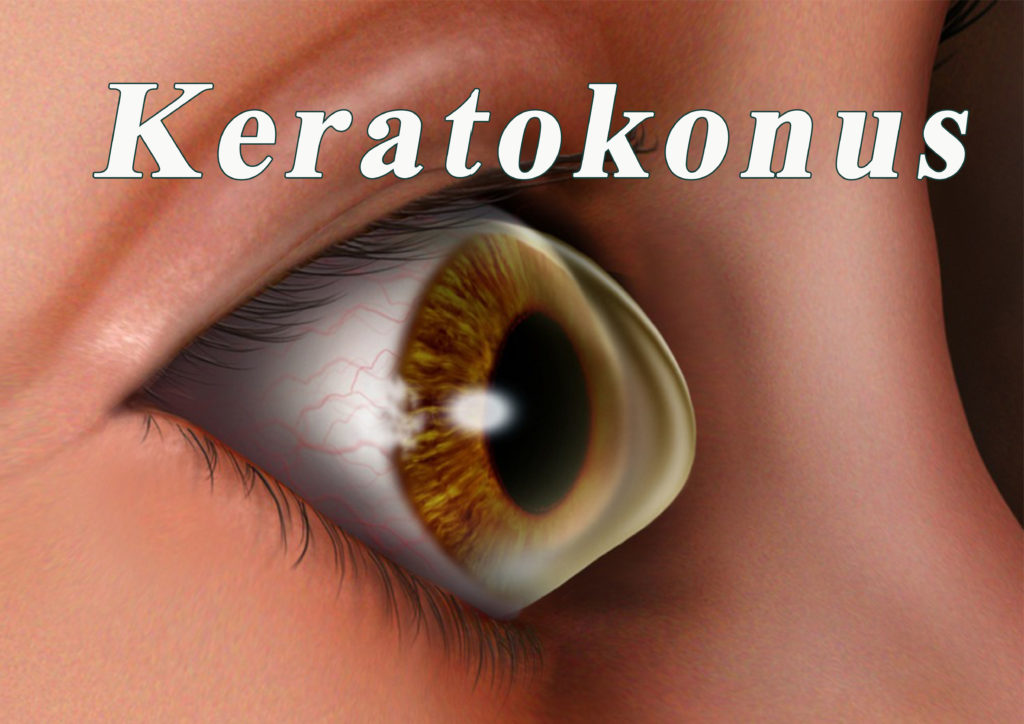
Keratoconus treatment
Keratoconus; is a disease caused by the bulging and sharpening of the transparent layer in front of our eyes, i.e. the cornea layer, over time. First it starts in one eye, then it develops in the other eye.
Thanks to today's technological capabilities, patients are able to determine earlier what diseases they have by examining their complaints. Disorders due to this disease; visual impairment, decreased quality of vision, and profound vision loss may occur.
Symptoms of keratoconus
These symptoms can vary from person to person, but it is not a congenital disease. In the early stages, it is possible to find types of keratoconus without symptoms, which do not cause any visual disturbances, and do not require a doctor. However, in routine eye examination, children or young people whose spectacle number has progressed, have a continuous change in their number, and still see well, are kept under control.
In this age group, while a change in eye number is expected, myopia and astigmatism numbers in this concern are progressing faster, and as they progress, these children are not getting the desired effect from their glasses. Special attention should be paid to these patients. In addition, early-onset complaints include glare, blurred vision (seeing an object at a skewed size), multiple vision (seeing the same object multiple times side by side), and night vision impairment. It is seen especially in patients who have allergies since childhood, because of which they rub their eyes regularly and cause trauma to the eyes.
Keratoconus and Allergy
Rubbing the eye hard due to allergies starts with watery, itchy, and dirty eyes, which can eventually lead to keratoconus.
Who gets keratoconus?
It is more common in regions where there is a lot of heat and allergies. It can be seen especially at the age of 15-16, that is, during adolescence and earlier. It's important to get an eye exam every year and pay attention to symptoms. This eye problem can progress until the age of 35-40. It is rarely seen after the age of 40. But it is more common in children. At the same time, because it is a genetic disease, people who have this disease in their family must undergo an eye examination every year.
Keratoconus Diagnosis
The diagnosis of the disease is determined by some examinations performed on patients whose eye number regularly increases during routine eye examinations, and on patients who are suspected or have family members suffering from this problem. Especially as a result of a detailed examination, which we call eye topography, it is possible to get results within a few minutes.
Keratoconus and Contact Lenses
In patients whose keratoconus has not progressed (between 35 and 40 years old), we can recommend improving the quality of vision with glasses and contact lenses. Lenses used specifically for keratoconus used to be rigid lenses only, but are now classified as semi-rigid, soft-centered, and rigid lenses. Contact lens patients need to be patient, as finding the right lens is a time-consuming process. It can take 2 hours, sometimes 6-7 hours to put on and take off the lenses and some exercises. If the patient still has difficulty wearing contact lenses and glasses, the rim treatment method is recommended for selected patients.
Keratoconus Surgery
In this case, the treatments are also individualized, which means that a different procedure can be applied to each patient. Today, the most common application in surgical treatments is the treatment we call Cross-linking, known as cross-linking or radiotherapy. This treatment method is a process that stops the progression of the disease.
Drop anesthesia is used in the cross-linking procedure. First, the epithelial tissue, which is a very thin layer in front of the cornea, is removed. After that, it is necessary to instill Riboflavin vitamin in 3-minute intervals for half an hour and in the last stage apply ultraviolet rays (UVA) for 30 minutes. After the procedure, the patient's eye does not need a bandage. After the examination on the first and third days, the contact lenses worn for the purpose of protection are removed. After surgery, patients may see blurred vision for a while, but this is temporary. It is also very important that the patient regularly uses eye drops after the procedure. The main purpose of this operation is to stop the disease. After this procedure, the patient is recommended glasses or contact lenses specific for keratoconus. If the patient is still not satisfied with the quality of vision, other treatment methods are recommended.
The second treatment method is ring treatment method. In other words, "cornea ring" treatment. The goal of this method is to improve the quality of the patient's vision. It is the preferred method in patients who are unsuitable for contact lenses. Earlier, a knife was used in this method. However, currently, the Femtosecond laser creates a channel in about 10 seconds, and the ring placement takes 1-2 seconds. Drip anesthesia is used in this operation, and this m